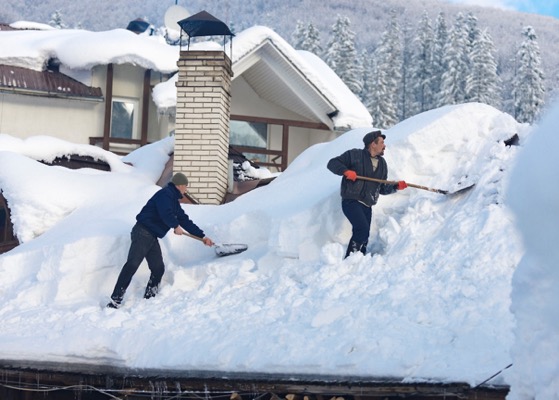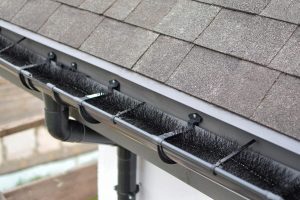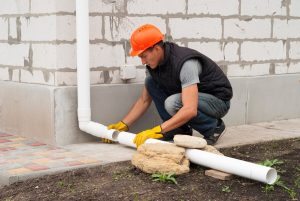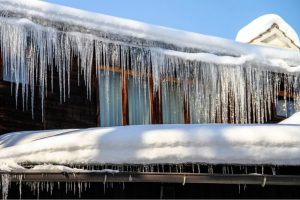When Does the Roofing Season Start?
Oct 1, 2023

In Canada, the roofing season starts in spring before the rains become too intense. Most roofers are usually more unoccupied in spring than in fall, making installation during that time easier, and most likely more affordable. Other parts of Canada start their roofing season in fall, before winter, or any time before hurricanes strike.
The best time to consider repairing your roof is in spring or fall when roofers are easily available, and they do not charge extra fees. However, if there is an emergency, you can contact the contractors immediately, even if it is winter.

The roofing season depends on where you live and the prevailing weather conditions. It is always wise to contact a local professional roofer to get more information on the roofing season. The best time to install a new roof is when the temperatures are neither extremely high nor low. There also should be no high winds and no precipitation.
While most roofers can work around any weather condition especially in an emergency, most prefer to work when the weather conditions don’t make their work more dangerous than it needs to be. Certain weather conditions can also impact the proper installing of a roof. If roofing has to be done in adverse conditions, you may have to pay more for the service.
When Roofing Season Usually Ends
Hot climates
In most parts of Canada, the roofing season ends in the middle of summer when the hot temperature becomes too high. The intense heat makes it harder for roofers to do their job efficiently, which makes it impossible to maintain the work schedule or meet clients’ expectations. The issue is generally worse in coastal areas that also experience high humidity during the hot season, making it impossible for the body to cool off quickly.
Although it may be difficult to find a reliable roofer during that period, you can still get some that will create a suitable schedule based on the weather changes. In most cases, they will start the work early and leave at midday.
Working with various types of roofing materials is also challenging during the hot weather. Some, like asphalt shingles, become too hot for the roofers to handle without gloves. With the increased body temperature, this may force the roofers to take frequent breaks that will also delay the repair progress. On the other hand, the flexibility of the roofing materials increases during warmer weather, which may make them easier to install.
Getting roofing services in mid-summer can be too costly because of the increased risks to the roofing contractors and possible delays in completing the job. The fact that the companies have to invest in additional safety measures to protect their employees also contributes to increased labour costs. Employers will also look out for signs of heat-related health complications.
If you need emergency services, make sure the company you hire has implemented the safety regulations required by the law. Try to get scheduled or routine services in spring, fall, or early summer before the roofing season ends.

Cold climates
During the cold climate, the roofing season usually ends when winter starts because the region experiences cold temperatures below 10 degrees Celsius. The change also takes a toll on roofing materials, with the shingles stiffening and becoming harder to use.
Another reason why the roofing season ends at the onset of winter is the use of sealants. Even if the roofers manage to work with the stiff shingles and install them correctly, the sealant will not get enough heat to activate it. That leaves room for interference with windstorms, which may end up moving the shingles around before they settle. Because of this, many roofing contractors advise homeowners to wait until the warm season begins to repair, replace, or install any roof.
While waiting may seem like a good option, the high latitude in Canada can make it challenging, if not impossible, by making the winter season too long. Because of that, most roofing companies have adapted a method of conducting business while the weather is unfavourable. Some of them seal shingles manually, especially if the manufacturers’ warranty and the areas’ building codes have such stipulations. In such cases, the contractor stores the shingles in a warm place to keep them from becoming stiff. They also implement measures that protect their employees from frostbites and accidental falls that are rampant during winter.
In ideal situations, contractors will avoid providing roofing services in winter, but they will charge higher prices if they must. The roofing estimate they give will often include the charges for the additional safety measures they have in place for their employees. For most of them, the safety precautions are routine during winter, but it is still possible to get seasonal discounts.
If your roof has a problem even in winter, do not hesitate to call D’Angelo and Sons. We understand the stress that comes with a dysfunctional or damaged roof and will not make you wait, especially if it is an emergency.

Windy and rainy climates
Most contractors also find it hard to provide their services during the rainy or windy season. Like 3-tab and laminate shingles, specific roofing materials require time and enough sun exposure to seal properly and bind to each other. They also need roofing nails to stay in place before the sun seals them. Strong winds and rain can prevent them from staying in place when nails are still holding them, which hinders proper sealing.
The roofing season also ends when hurricanes are expected in Canada, which is easier because hurricanes are typically predictable. Pay attention to the weather report and try to complete any pending roofing project before the hurricane season strikes.
Similarly, tornadoes are also a hindrance to roofing services. However, unlike hurricanes, they are harder to predict, which makes them harder to work around. The local weather forecast may give information about expected tornadoes, but the roofers may not have enough time to change their schedule. Since they do not occur seasonally, homeowners and roofers should pay attention to the weather forecasts and complete pending projects before tornadoes strike. Most tornadoes occur in the spring season, so that is the period to watch out for.
Schedule for routine services in advance and work closely with the roofers to ensure the job is completed before the windy or rainy season.

What is the best time to install a new roof?
In the event of an emergency, you should get your roof fixed immediately. However, if there is no emergency or rush to get a new roof, it is good to aim for weather conditions where there are no rains, strong winds, or extreme temperatures. You should also avoid peak roofing seasons as it may be hard to schedule a roofer when they are busy. In the cold climates, early summer is a good time to get a new roof. Late fall will be perfect for areas with warm climates. Contacting a roofer and conforming to their schedule may help get a discount for waiting until business slows down. Being in a rush does not, however, mean you opt for a roofer with a bad reputation. Quality services must always be a priority.





